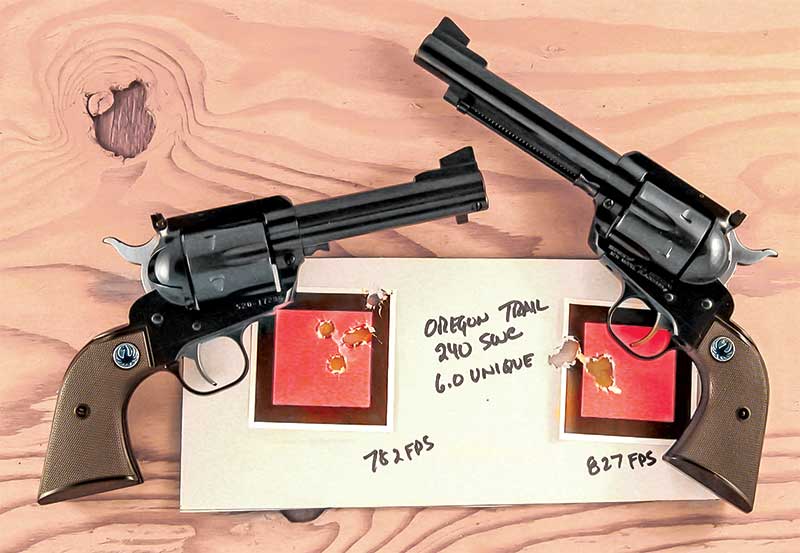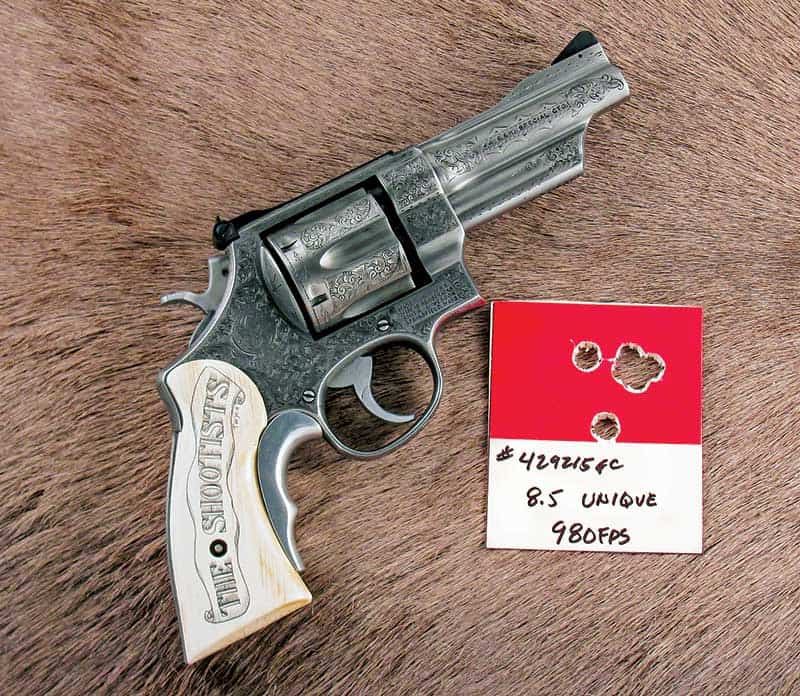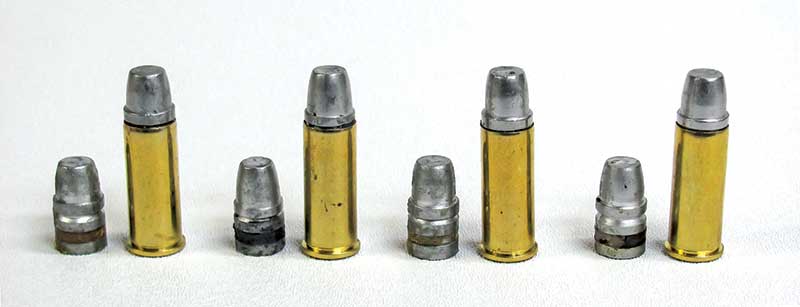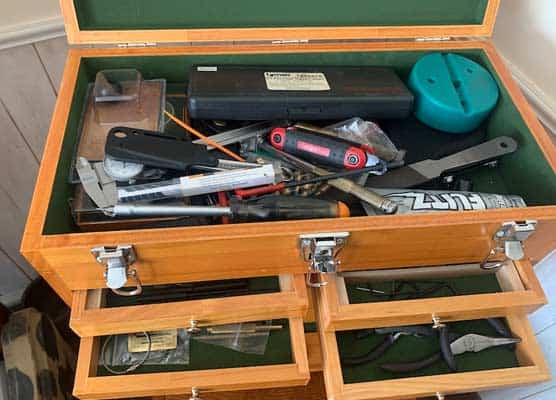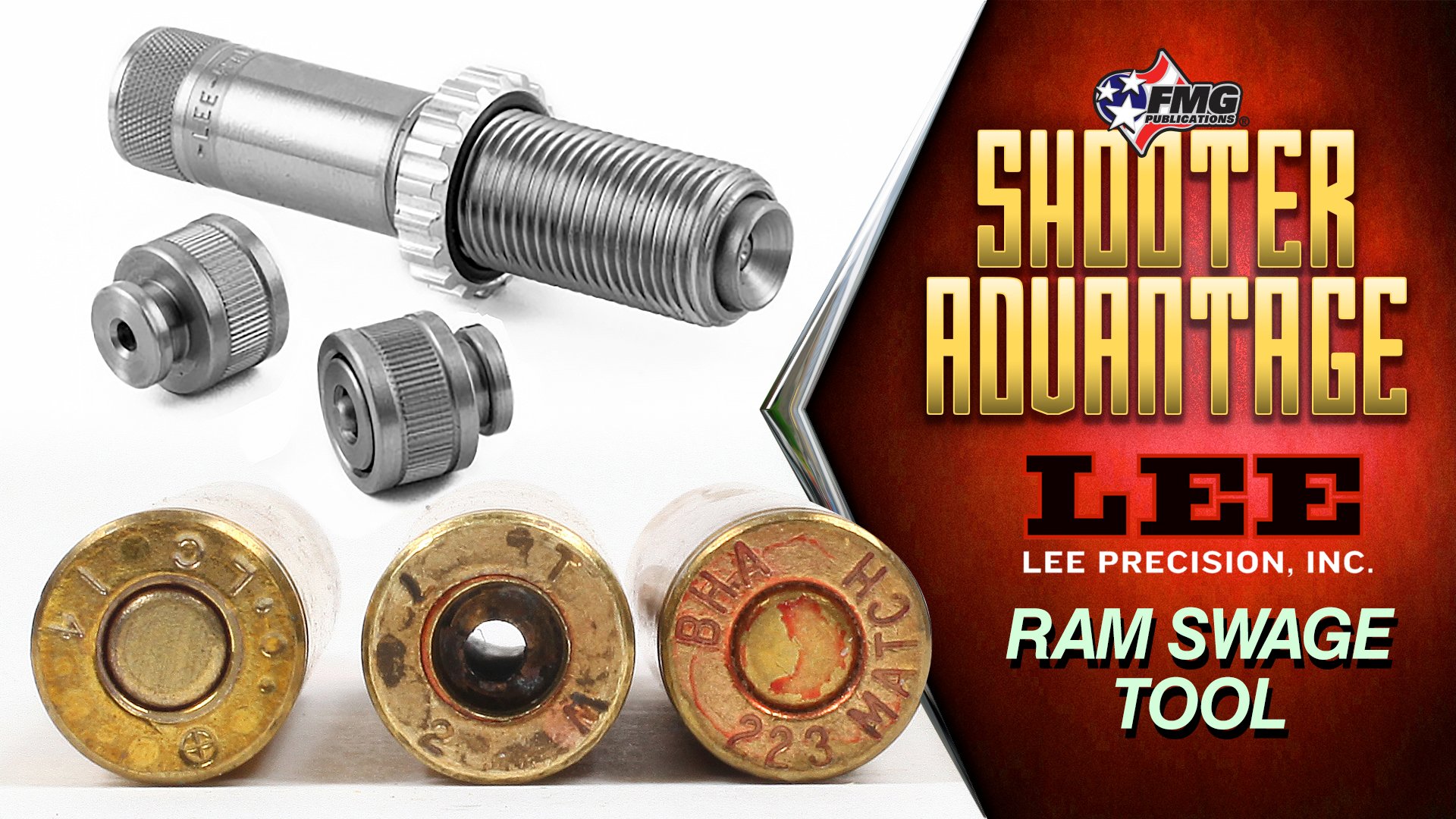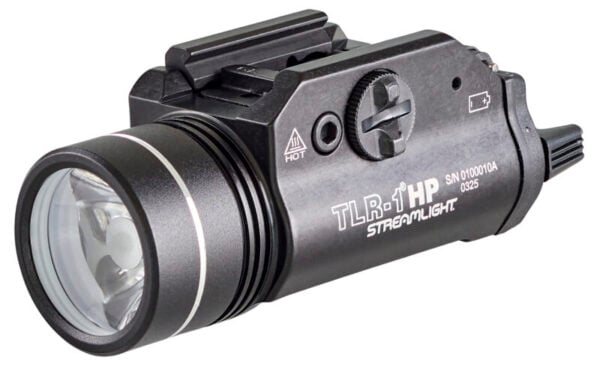Everyday Workin'
Loads .44 Special
Whether we travel the sagebrush, foothills, forests, or mountains there are .44 Special loads that will handle any situation we’re likely to encounter.
Why the .44 Special? A better question would be, why not? For the vast majority of us, the .44 Special will do everything needing doing with the sixgun. We’re not looking for long-distance hunting or max power. In other words, a load comparable to the black powder .45, with a 250-gr. bullet at 900 fps left little to be desired.
Keith Rules
My standard choice for loading the .44 Special is what’s normally known as the Keith bullet. There are many bullet designs bearing the name Keith, but a semi-wadcutter design does not make it a “Keith” bullet. Elmer laid down specific specifications for a bullet bearing his name: three equally sized full caliber driving bands, a deep crimping groove between the middle and top bands, a large grease groove between the middle and bottom bands and a flat bottom with no bevel.
Since I cast my own, I have a choice of H&G #503, Lyman #429421, NEI #260.429 and the RCBS #44-250KT bullets. Using wheel weight alloy, they weigh approximately 255–260 grains. I recently read the .44 Special cast bullet is standardized at 0.430″. This is definitely not the case if you’re looking for accuracy. I have .44 Specials whose chamber throats are as tight as 0.427″ and as large as 0.433″, and I just took possession of a Spanish copy of the old S&W Triple-Lock with 0.437″ throats. Trying to make a 0.430″ bullet work for all of these would be an exercise in futility.
John’s Secret Recipes
My standard loads are assembled with 7.5 grains of either Unique or Universal, 17.5 grains of #4227, or 8.0 grains of Power Pistol. Depending upon barrel length, sixgun and bullet, these loads will be in the 900 to 1,000 fps range. They’re certainly capable of doing everything we expect the sixgun to do. If I’m looking for a little more velocity, I go with the Lyman/Thompson #429215GC that lubed, sized and gas checked weighs around 220 grains. For this bullet 8.5 grains of Unique results in 980 fps in a 4″ barreled S&W while 15.5 grains of #2400 goes up to 1,140 fps. With a 51/2″ barreled sixgun, 9.0 grains of Unique is just under 1,200 fps.
For those who don’t cast, check out the Oregon Trail Laser Cast 240-gr. SWC. This is not a true Keith bullet and even has a bevel base, however it shoots well. With 6.0 grains of Unique and a 51/2″ sixgun the result is a very pleasant shooting, and accurate, load of 825 fps. That’s slightly more than the original .44 Special loading from more than a hundred years ago. Going up to my standard load of 7.5 Unique registers just over 1,000 fps from a 4″ S&W Model 1950.
Speer offers the perfect .44 Special jacketed bullet. The 225-gr. SWC-HP is one of the first “jacketed” bullets offered by Speer nearly 50 years ago. It’s a natural outgrowth of half-jacketed bullets, and unlike traditional jacketed bullets, consists of a full-length copper cup with a lead core. I push this with 16.3 grains of #2400 yielding 1,217 fps from a 51/2″ barrel. Either 17.0 grains of #4227 or 8.5 grains of Unique will give right around 1,000 fps. Using standard weight 240-gr. jacketed bullets from Hornady, Sierra, or Speer with any of my first mentioned standard load powders result in slightly slower velocities than cast bullets, giving right around 900 fps from a 51/2″ barrel.
You will notice the standard Keith load is conspicuous by its absence. I do use it from time to time, however it’s more than I want for an everyday workin’ load at 1,200 fps with a 260-gr. bullet. Instead of using it in my lighter weight .44 Special sixguns, I mostly use it in .44 Magnums.
The idea of .44 Special for Everyday Workin’ Loads is a relatively lightweight sixgun, around 1/2 lb. less than a comparable .44 Magnum, and also less recoil while still being more than adequate for any situation which should arise. For me, the .44 Special and the above loads fit the bill nicely.

